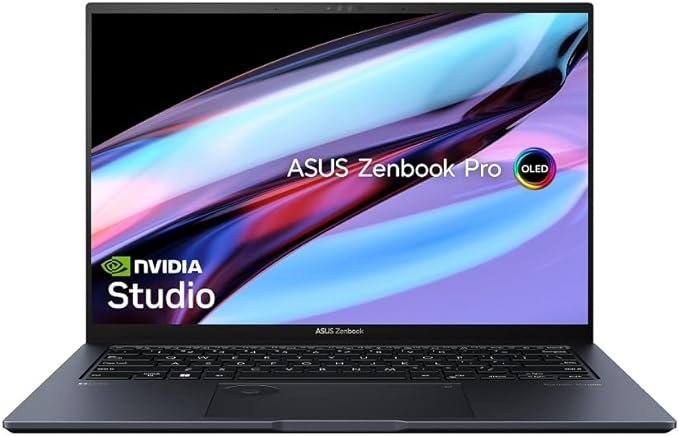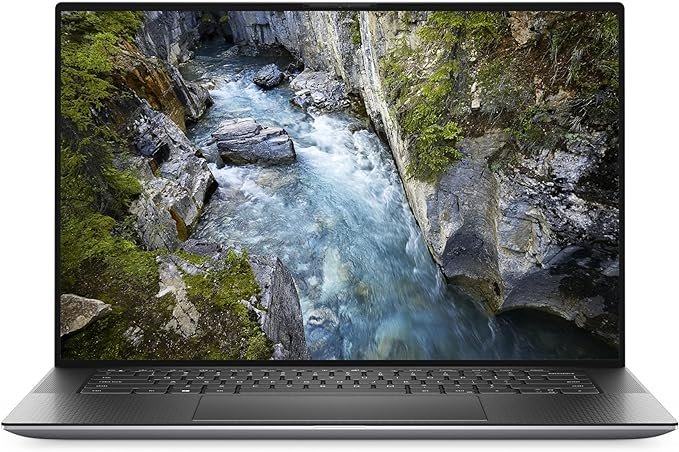When considering the best laptops for photo editing, it is very important to have a harmonious combination of flawless portability and robust performance, while ensuring durable cooling and performance throughout use.
Within this piece, you’ll discover the following key elements:
- Introduction to best laptop for photography
- Steps to Choose a laptop for photography
- 5 best laptops for photography editing
- Frequently Asked Questions (FAQs)
Introduction to best laptop for photo editing photography
In the current landscape, virtually every major laptop manufacturer offers models with high-end 4K screens with 100% colour space coverage and wide contrast ratios, ensuring consistent visibility of highlight and shadow details. Make sure.
From seasoned photographers bringing life to static images to graphic designers and digital artisans weaving visual narratives, and even influencers and content creators who rely on laptops to engage audiences.
Quick Chase
This laptop considered as best affordable laptop for photography
ASUS Zenbook Pro 14 OLED

4.3 out of 5
- Processing Efficiency: Intel i9-13900H CPU (13th generation)
- Memory Capacity: 32GB RAM (16GB DDR5 on board + 16GB DDR5 SO-DIMM RAM)
- Storage Location: 1TB M.2 NV Me PCIe 4.0 Performance SSD
- Graphics Card: NVIDIA GeForce RTX 4070 with 8GB GDDR6 VRAM
- Screen Quality: 14.5-inch WQXGA+ OLED Nano Edge touchscreen, Dolby Vision certified, PANTONE Validated, 120Hz refresh rate
HP Laptop

4 out of 5
- Processing Efficiency: Intel Core i7-1255U Processor (12th generation)
- Memory Capacity: 32GB DDR4 SDRAM
- Storage Location: 1TB PCIe NV Me M.2 SSD
- Graphics Card: Integrated Intel Iris Xu Graphics
- Screen Quality: 17.3″ diagonal HD+ touchscreen, BrightView, 250 nits
Samsung 14″ Galaxy Book4 Pro

4 out of 5
- Processing Efficiency: Intel Core 7 Ultra Processor 155H
- Memory Capacity: 16GB RAM
- Storage Location: Options for 512GB or 1TB SSD
- Graphics Card: Integrated Intel ARC Graphics
- Screen Quality: 3K AMOLED touchscreen (2880 x 1800), bright and vivid
What is the best laptop for photography editing
This is especially true for individuals transitioning from expert image capture to expert editing. If one wants to edit photos quickly and efficiently, investing in a high-end laptop is paramount. However, mastering the intricacies of photo editing can prove to be as difficult as navigating the vast array of laptop options available.
Equipped with swift processors, ample RAM, and spacious storage drives, these sleek wonders are poised to overtake the archaic desktop towers commonly found in office setups.
The latest iteration of the MacBook Pro reigns supreme in terms of photo editing capability and overall performance for home tasks. Take, for example, the current MacBook Pro 14 (M3, 2023), which is known for its blazing speed and unmatched screen quality, enabling users to edit photos with unparalleled precision.
Steps to Choose a best budget laptop for photography
Processing efficiency:
The central processing unit (CPU) acts as the laptop’s powerhouse, determining its ability to handle resource-intensive programs and photo-editing software. A higher CPU is characterized by a higher clock speed (GHz), core count, and thread count. For the best image editing performance, aim for a modern processor with at least four cores and a clock speed of over 3 GHz to handle demanding editing tasks.
Memory Capacity:
Random access memory (RAM) plays an important role in a laptop’s ability to multitask and handle large files efficiently. Complex editing software works seamlessly with more RAM capacity, usually measured in gigabytes (GB). At least 16GB of RAM is recommended for image editing, while 32GB is better for heavy multitasking and managing high-resolution photos without performance hiccups.
Storage Location:
Storage capacity is very important for storing photo files and running applications efficiently. Storage in modern laptops is primarily measured in gigabytes (GB) or terabytes (TB). For photo editing purposes, a minimum of 512 GB SSD is recommended to ensure quick access to files and programs. If your budget allows, consider investing in 1 TB or more to accommodate extensive image libraries.
Graphics card:
GPUs are evaluated based on their processing power, memory capacity, and speed. For expert image editing, prefer a laptop equipped with dedicated graphics cards like NVIDIA GTX/RTX or AMD Radeon RX series. Look for a GPU with at least 4 GB of video RAM (VRAM) to efficiently manage graphics-related tasks.
Screen Quality:
Your laptop screen specifications are important for viewing and editing photos accurately. Consider factors such as pixel count (resolution) and colour accuracy (colour gamut coverage, including sRGB, Adobe RGB, etc.). For photo editing purposes, choose a laptop with Full HD (1920 x 1080) or higher resolution. Alternatively, if detailed work is paramount, consider investing in a 4K monitor known for exceptional colour accuracy across the sRGB and Adobe RGB colour spaces.
5 best laptops for photography editing
Apple 2023 MacBook Pro – best apple laptop for photography
Microsoft Surface Laptop 5 – best affordable laptop for photography
Samsung Galaxy Book2 Pro – best laptop for photography editing
Dell Mobile Precision 5560 Laptop – best budget laptop for photography
Windows Laptop Computer – best laptop for photo editing photography
Apple 2023 MacBook Pro:

4.6 out of 5
- Processing Efficiency: M3 chip with 8-core CPU and 10-core GPU
- Memory Capacity: 8GB Unified Memory
- Storage Location: 1TB SSD
- Graphics Card: Integrated Apple Integrated Graphics
- Screen Quality: 14.2-inch Liquid Retina XDR Display, Extreme Dynamic Range, over 1000 nits brightness
Microsoft Surface Laptop 5:

4.6 out of 5
- Processing Efficiency: Intel Core i7-1265U (12th generation)
- Memory Capacity: 32GB LPDDR5X
- Graphics Card: Integrated Iris Xu Graphics
- Screen Quality: 13.5″ 2256 x 1504 touchscreen with Corning Gorilla Glass 5
Samsung Galaxy Book2 Pro:

4.1 out of 5
- Processing Efficiency: 12th Gen Evo-certified Intel processor
- Memory Capacity: 32GB RAM
- Storage Location: 1TB SSD
- Graphics Card: Integrated Intel ARC discrete GPU
- Screen Quality: 15.6″ AMOLED screen, up to 33% brighter, full-HD camera
Dell Mobile Precision 5560 Laptop:

1 out of 5
- Processing Efficiency: Intel Core i7-11850H (8 Core, 2.50 GHz to 4.80 GHz)
- Memory Capacity: 32GB DDR4 RAM Storage Location: 512GB PCIe M.2 SSD
- Graphics Card: NVIDIA T1200 w/4GB
- Screen Quality: 15.6″ Ultra Sharp FHD+ display
Windows Laptop Computer:

4.1 out of 5
- Processing Efficiency: Intel N95 Processor (2-3.4 GHz)
- Memory Capacity: 16GB DDR4 RAM
- Storage Location: 512GB M.2 PCIe NV Me SSD
- Graphics Card: Integrated
- Screen Quality: 15.6″ FHD IPS LCD Screen
Here is the related content you may also like to read:
05 BEST LAPTOP FOR TRAVEL IN 2024
10 BEST LAPTOP FOR ADOBE ILLUTRATOR
TOP 7 BEST LAPTOP FOR ARTISTS IN 2024
Frequently Asked Questions (FAQs)
1. What is the best screen size for a photo editing laptop?
Larger screens offer more comfortable editing experiences but can sacrifice portability. For on-the-go use, consider a 13- or 14-inch laptop, while 15/16-inch models strike a balance between mobility and screen real estate.
2. Which display technology Is best for Photography?
Prefer laptops with IPS LCD or OLED display technology for better contrast, wider viewing angles and vibrant colors.
3. How much storage space needed for photography editing?
Choosing a solid-state drive (SSD) with a capacity of at least 512GB is recommended for smooth performance, especially when working with high-resolution files or 4K video editing. Consider additional storage solutions such as external hard drives to increase storage capacity as needed.
4. Is a dedicated graphics processor necessary for photo editing?
Although dedicated graphics processors can increase performance, they are not necessary for most image editing tasks. Modern processors, combined with enough RAM, can handle image editing efficiently. However, a mid-range graphics processor can speed up some Photoshop filters.
5. How should I Determine CPU performance when Selecting a Budget laptop for Photography?
Focus on the base frequency (GHz) and several processing cores instead of getting confused by complex model numbers. Both Intel and AMD processors offer capable options for photo editing tasks.






Pingback: TOP 7 BEST LAPTOP FOR ARTISTS IN 2024 – Laptomenia
Pingback: 05 BEST LAPTOP FOR TRAVEL IN 2024 – Laptomenia
Pingback: 7 BEST LAPTOPS FOR ANIMATION ON A BUDGET – Laptomenia
Pingback: BEST LAPTOP FOR VIDEO EDITING IN 2024|TOP RATED OPTIONS - Laptomenia